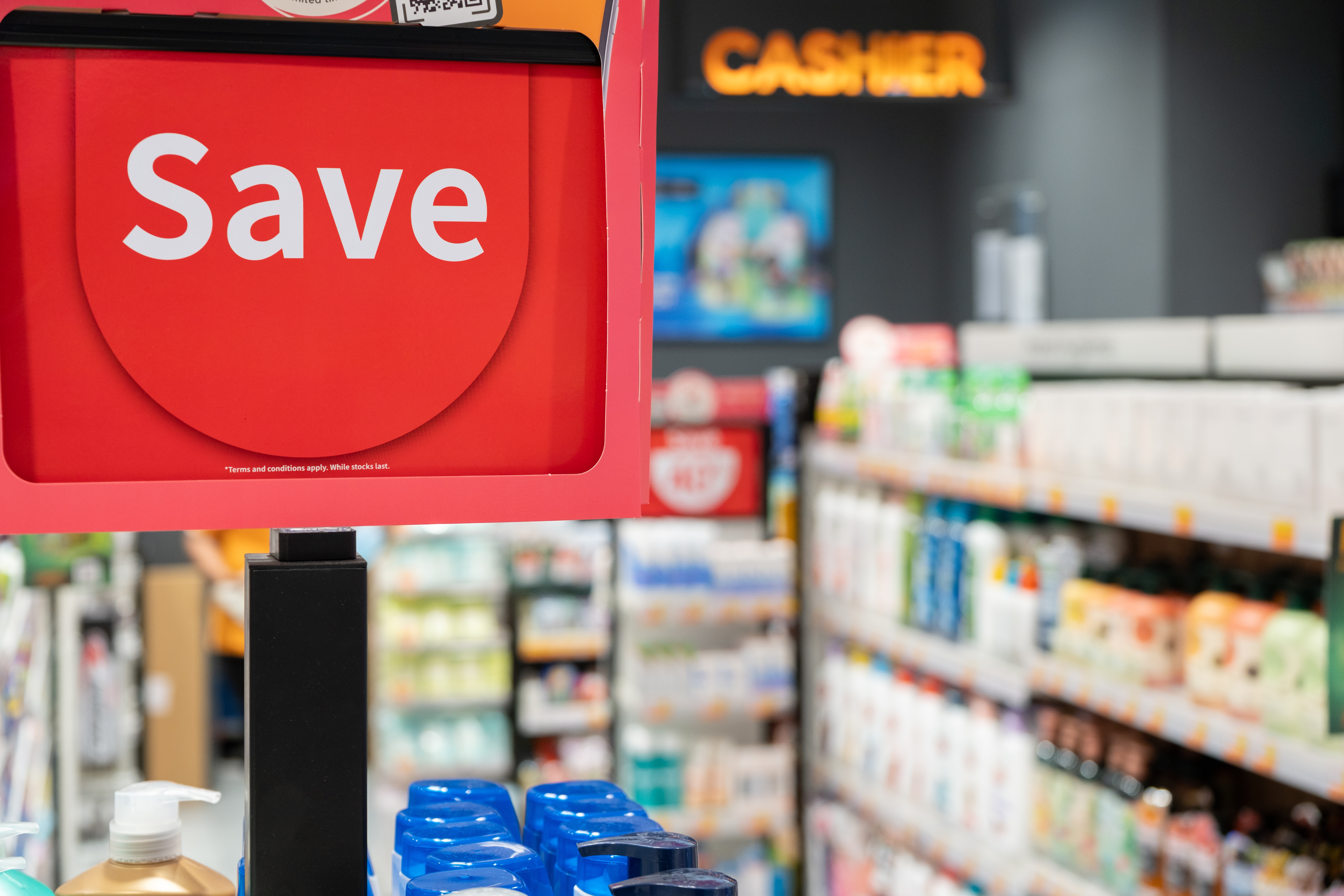Anyone who’s worked in retail knows the frustration of retail non-compliance. The process from merchandising conception to in-store execution is a long road, so most retail workers see it as inevitable that something will be lost along the way, like a game of telephone. But what if you had effective tools to minimize the cost of non-compliance? With the power of augmented reality (AR) technology, bridging the gap between communication and in-store execution has never been easier.
Imagine — no more wasted resources on ineffective merchandising strategies. AR provides the solution to optimize training, increase clarity, and prevent costly non-compliance issues.
At InContext, we can help you enhance your retail game and achieve merchandising success like never before with our innovative AR technology.
What is non-compliance?
Most retail workers understand the basics of non-compliance at store-level merchandising, but let’s break it down a bit more. This type of non-compliance is the failure of a store or its employees to follow regulatory guidelines and compliance requirements for the display and presentation of products like CPG (consumer packaged goods).
This can include improperly stocking shelves, not arranging products per visual merchandising plans, not adhering to product placement guidelines, or ignoring signage and labeling requirements.
Non-compliance can cause a disorganized and unattractive store environment, negatively impacting customer experience and sales. To combat the consequences of non-compliance, most retailers regularly monitor and enforce compliance to ensure their stores present a professional and inviting image to customers.
Causes of non-compliance
When it comes to non-compliance, there are a few contributing factors you should be aware of, including:
Lack of employee understanding
We can’t expect every employee to immediately be in alignment with what the products are and how they should be displayed and sold. A working understanding of a retail brand and its goals takes time and guidance.
That’s why a gap in understanding is so common. When employees don’t correctly understand the products they are selling and the store’s merchandising strategies, it often leads to non-compliance with established guidelines and protocols for product display and presentation.
When this happens, it can result in a store environment that appears disorganized, unprofessional, and unattractive to customers. This lack of understanding can also hinder an employee’s ability to implement strategies properly and create a cohesive customer shopping experience.
Organizational disconnect
Another cause of non-compliance is a disconnect between retail executives and branch staff. When there is poor communication and coordination between the two levels of management, branch staff may need to be made aware of the latest merchandising strategies and requirements or may receive proper direction and support in implementing them.
This lack of information will impact employee understanding, resulting in a chaotic store environment. A connected and well-informed team is critical to a successful and compliant store environment.
Lack of tools
A lack of adequate tools for communication and consistent execution of best practices can also lead to non-compliance. When retail executives and branch staff cannot easily communicate and share information, there can be confusion and miscommunication about merchandising strategies and requirements.
Without proper tools and systems to support the consistent implementation of best practices, the execution of merchandising strategies can be inconsistent and less effective.
Poorly trained associates
Poorly trained employees can result in a lack of understanding and inconsistent execution of store merchandising standards, leading to non-compliance issues. Incorrectly displayed products, improper signage, and unkempt store displays are just a few examples of how inadequate training can negatively impact a retail store‘s overall appearance and profitability.
To prevent this issue and ensure a thriving store environment, retailers must provide their employees with the necessary training and resources to fully understand the products and merchandising strategies.
Costs associated with non-compliance
When non-compliance occurs, there can be many costs, including:
Poor sales performance
Poor store sales performance is one of the most significant costs associated with non-compliance regarding store merchandising. When a customer has a bad experience due to a disorganized store environment, it can discourage customers from making purchases.
This can lead to lower sales and reduced revenue for the retailer. Additionally, non-compliance may result in increased costs for the retailer, as they may need to spend more time and resources correcting mistakes.
Decreasing customer conversion rates
Decreasing customer conversion rates is another cost associated with non-compliance. When a store customer has a confusing shopping experience, they may be less likely to make purchases, or worse, less likely to return to the store in the future.
This decrease in customer conversion rates will impact overall retail sales and long-term impacts on customer loyalty.
Deteriorating brand integrity
Another cost associated with non-compliance is deteriorating brand integrity. Many shoppers return to a particular store chain and even a specific location due to brand loyalty. However, if customers continuously have experiences that negatively impact the retailer’s brand image, they may associate the retailer with poor quality and unprofessionalism.
Non-compliance can also result in inconsistencies in the store experience across different locations, further damaging the retailer’s brand integrity.
Loss of customer loyalty
When it comes to the success of a business, repeat customers play an essential role. Unfortunately, a loss of customer loyalty is another cost associated with non-compliance with in-store merchandising. When a store continues providing a negative customer experience, it can reduce the likelihood of repeat visits and customer loyalty.
Repeat customers are valuable for retailers, as they are more likely to make larger purchases and provide positive word-of-mouth referrals. By prioritizing compliance with store merchandising guidelines and creating a cohesive and inviting shopping environment, retailers can help maintain customer loyalty and build long-lasting customer relationships.
Productivity loss
Productivity loss is another consequence that contributes to the total cost of non-compliance. When a store is not following established guidelines for product display and presentation, it can lead to increased labor costs, as associates may need to spend more time correcting mistakes.
It can also increase training costs, as associates may need to be retrained to implement new merchandising strategies and updates correctly. These increased costs can negatively impact the retailer’s productivity, diverting resources away from other essential areas of the business.
How can AR help solve compliance issues?
Non-compliance regarding store merchandising can be a frustrating issue. The good news is, there’s a solution. With innovative apps, like InContext’s AR field enablement app — SMX GO — retailers can visualize and validate displays and signage on site.
This makes it easy to ensure that employees have the knowledge and tools to maintain the best merchandising practices.
Here’s how:
Accessibility
AR can make the nuances of a retailer’s best practices more accessible to store associates. This is because AR technology allows associates to experience the guidelines and protocols for product display and presentation in a way that simulates real-life scenarios. This will enable associates to gain a deeper understanding of the retailer’s merchandising strategies and best practices, as they can see the impact of their actions in real-time.
AR training also provides a more interactive learning experience, which can help increase associate retention and motivation. This can help improve compliance with established merchandising guidelines, leading to a more organized, attractive, and inviting shopping environment for customers.
Reducing the employee learning curve
AR can also reduce the learning curve for employee training. The real-life environment simulated through this technology helps employees to learn more quickly and effectively, as they can receive immediate feedback.
By reducing the learning curve for employee training, AR can help retailers ensure that their employees are up-to-date on the latest merchandising best practices and can implement these strategies effectively. This can help increase compliance with established merchandising guidelines, leading to a more organized, attractive, and inviting shopping environment for customers.
Increasing employee engagement
Unlike outdated training videos, AR provides an engaging and motivating platform for employees to do their best field execution work regarding store merchandising. AR technology allows employees to experience the guidelines and protocols for product display just as it would live in the store. The sense of accomplishment from learning quickly can increase employee motivation and job satisfaction.
AR training also provides immediate feedback, which can help employees understand the impact of their actions and continuously improve their performance. By providing an engaging and motivating platform for employee training, AR can help retailers ensure that their associates are well-equipped to execute their best fieldwork and deliver exceptional customer experiences.
Improve training and provide clarity
AR technology can enhance retail training and improve store compliance with best practices by providing interactive and visual aids, as well as improving training automation. With AR, employees can receive a more engaging and memorable training experience, making it easier to retain information and follow guidelines. Additionally, real-time feedback allows employees to make adjustments on the spot to ensure that products are displayed correctly and according to standards.
This not only improves the store’s overall appearance but also helps prevent costly non-compliance issues. By utilizing AR, retailers can reduce the costs associated with non-compliance, drive sales, and improve the overall effectiveness of their training programs.
Learn more about AR innovation with InContext
Interested in our advanced retail execution software and learning more about correcting non-compliance in the retail space? Contact InContext to learn more about AR training and VR technology in retail merchandising. Let’s work together to enhance your retail success.





